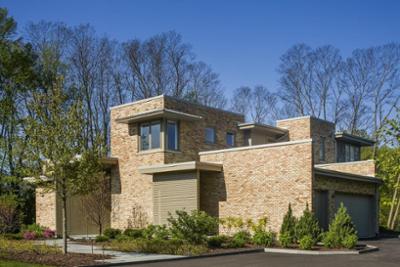

What is sustainable architecture?
If new urban areas are designed with the environment in mind, so are buildings. Over time, the use of sustainable materials will also be applicable to buildings and new structures. This trend, which is increasingly prevalent in cities, is a powerful way to reduce the negative impact of building materials on the environment.
Society is shifting towards a more sustainable world and so are urban environments, so why shouldn't buildings and infrastructures do the same? The concern for leading a lifestyle that takes the environment into consideration has led to this type of practice being implemented in architecture as well.
Thus, sustainable architecture is becoming an increasingly widespread practice in buildings and cities because it is important to remember that wherever something can be changed to improve the planet, it will always be worthwhile.
Definition
Sustainable architecture is defined as the practice of designing and constructing buildings from a perspective that considers the natural resources used and the concern for minimising the negative impact on the environment.
As we have already seen in this article on sustainable cities, it is extremely important to extend this practice to improve environments; not only in building but also in the creation of towns that are consistent with care and sustainability and that are capable of ensuring their continuity and development without depleting the natural resources they have at their disposal.
Nowadays, new buildings have a tendency to create cleaner spaces using materials that do not generate a negative footprint, but on the contrary, manage to mitigate the emission of greenhouse gases. This is the case, for example, of the gardens that are planted on the roofs of many buildings, as they help to absorb some of the carbon dioxide that is emitted in cities.
Characteristics of sustainable buildings
The characteristics of these buildings usually include the installation of solar panels to use clean, renewable energy; rainwater collectors to collect water and reuse it in the processes carried out in each building; and low-consumption smart lighting, to make the best use of resources and avoid wasting energy.
Other features include the use of local raw materials, composting and waste management plants, and energy-saving systems that also avoid the unnecessary consumption of heat sources through heating, thanks to insulation that keeps the building cool in summer and maintains the heat in winter to achieve energy efficiency and comfort.
The true importance of sustainable architecture
The development of new materials has also boosted this trend, which is why its importance is growing. The entire construction phase becomes a sustainable process. Thus, both the management of the preliminary resource and the subsequent use and efficiency of the building will also have this distinction.
In order to take into account architecture that promotes an eco-friendly culture, the Technical Building Code is established, according to which the building process, due to its direct impact on the configuration of inhabited areas, implies a commitment to functionality, economy, harmony and environmental balance, of obvious relevance from the point of view of public interest, as this law establishes.
Thus, this type of architecture takes into account the entire course of the building process, which is why this law is so important for the construction of buildings in new urban areas.
New spaces, new environments
Sustainable architecture is an intrinsic part of the creation of new spaces in which people and nature will play a greater role. Fifty years ago, the idea was to give more importance to the car in order to create better access to all parts of the city, but now that idea has changed drastically, and it is people who are beginning to take centre stage.
Clean spaces, with a multitude of green and accessible spaces, are the key elements of the cities of the future that have already begun to be planned.
In this respect, a new concept has arisen: 15-minute cities. These are spaces in which, within each city, everyone should have access to basic facilities from their point of origin at home to their place of work, school, leisure or shopping areas.
This new approach changes not only the layout, but also the design of cities, to avoid the need to use private vehicles and thus generate more greenhouse emissions into the atmosphere.





